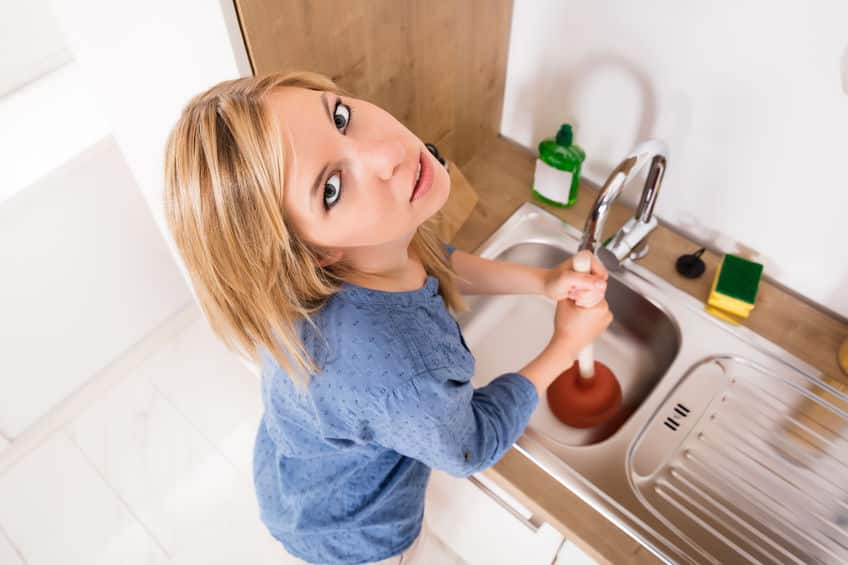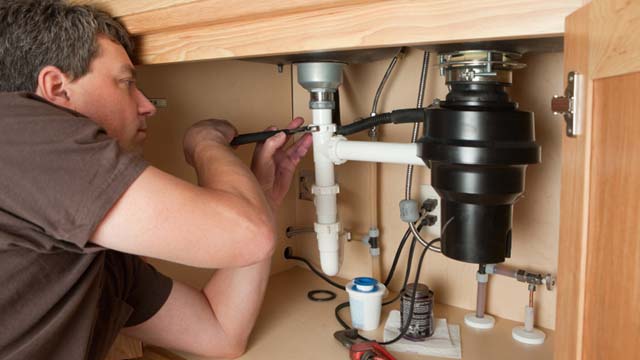What are your ideas regarding How to fix a pretty consistent leak from my garbage disposal?

Garbage disposals are essential kitchen area appliances that assist in disposing of food waste successfully. Nonetheless, a leaking waste disposal unit can be a frustrating and unpleasant problem to take care of. Luckily, several leaks can be dealt with quickly with a few simple actions. In this write-up, we will certainly go over how to take care of a leaking waste disposal unit successfully.
Intro
Garbage disposals are mounted under kitchen area sinks and are created to shred food waste right into smaller items, enabling it to go through the pipes system easily. While these gadgets are typically dependable, leakages can occur over time because of damage, loosened connections, or damage to the unit.
Step-by-Step Overview to Repairing a Dripping Waste Disposal Unit
Shut off the Power
Prior to trying any kind of repairs, guarantee that the power to the waste disposal unit system is turned off to prevent the risk of electrical shock.
Locate the Leak
Recognize the specific area of the leakage and identify the reason
Tighten up Connections
Use a wrench to tighten any loose links in between the disposal unit and the pipes system.
Replace Seals or Gaskets
If the leakage results from used seals or gaskets, get rid of the old components and replace them with new ones.
Patching Cracks or Openings
For splits or holes in the disposal system, usage epoxy or an appropriate patching material to seal the damaged location.
Recognizing the Source of the Leak
Before attempting to deal with a dripping garbage disposal, it is important to recognize the resource of the leak. This can typically be done through visual inspection or by performing easy examinations.
Visual Examination
Examine the waste disposal unit unit carefully for any type of signs of water leak. Pay close attention to areas around seals, gaskets, and connection points.
Checking for Leakages
One method to test for leakages is by running water with the disposal unit and checking for any kind of visible signs of leak.
Common Sources Of Leakages in Trash Disposals
Worn Seals and Gaskets
Seals and gaskets play a critical role in protecting against water from leaking out of the garbage disposal. In time, these components can wear away, causing leakages around the disposal device.
Loose Connections
The connections in between the garbage disposal and the plumbing system can become loosened gradually, triggering water to leak out during procedure.
Cracks or Holes in the Disposal Device
Physical damages to the garbage disposal, such as cracks or openings in the housing, can additionally cause leaks.
Devices and Materials Needed for Fixing a Dripping Waste Disposal Unit
Before starting the fixing process, collect the needed devices and products, consisting of a screwdriver, adjustable wrench, plumbing's putty, replacement seals or gaskets, and epoxy or patching material for repairing fractures or holes.
Evaluating the Garbage Disposal After Repair Work
Once the repair work is full, check the waste disposal unit by running water with it to make certain that the leakage has actually been resolved.
Preventive Maintenance Tips to Prevent Future Leaks
To stop future leaks, it is vital to do regular maintenance on your garbage disposal. This consists of maintaining it tidy, avoiding putting non-food products or tough items down the disposal, and periodically checking for leakages or other issues.
Final thought
To conclude, repairing a leaking garbage disposal is a relatively simple process that can be completed with basic tools and materials. By following the actions detailed in this article and exercising preventive maintenance, you can keep your garbage disposal in good working condition and stay clear of costly repairs in the future.
What to Do About a Leaking Garbage Disposal
A leaking garbage disposal often goes unnoticed until you confront a sopping cabinet, a foul-smelling puddle, or an audible drip-drip-drip from the unit. The fix can be frustrating, too, because the leak can stem from a number of components in the system. Fortunately, with a little sleuthing, you can zero in on the leak and—depending on the exact location—stop the icky oozing and repair the component that caused it. Worst case scenario, if it turns out that the garbage disposal must be replaced, installing a new one is a reasonable do-it-yourself task for those with basic plumbing skills. Read on to keep the cash you’d otherwise hand over to a pro.
Prepare to find the leak
Prior to testing the garbage disposal for leaks, unplug it at the wall outlet and turn off the power from the breaker box to prevent electrical shock. Then insert a watertight sink stopper into your sink drain and wipe the unit dry with a clean cloth. In any handy container, mix a few drops of food coloring into a few cups of water, and pour the dyed water onto the sink stopper to help you locate the leak.
Investigate the source
the top, where the disposal meets the sink drain the side, where the dishwasher hose or main drain pipe connects to the disposal or the bottom of the unit Inspect each of these locations while gliding a light-colored rag over the unit; the dyed water will readily show on the rag and reveal the location of the leak. If a leak isn’t immediately apparent, remove the sink stopper and pour a few more cups of dyed water down the sink drain, then check for leaks again. Leaks near the top of the unit are more likely to show themselves while the sink is plugged, while side and bottom leaks are more noticeable while the sink is unplugged.
The metal sink flange that sits directly inside the sink drain is typically sealed around the top with plumber’s putty (a clay-like sealant) and then secured from under the sink with bolts. If the plumber’s putty deteriorates, or the bolts loosen, the flange can no longer form a watertight seal between the sink drain and the disposal—which could cause a leak at the top of the unit.
To reseal the leaky flange, you must first detach the garbage disposal. Start by loosening the screws securing the main drain pipe to the disposal, then loosen the screws in the metal clamp securing the dishwasher hose to the disposal and detach the drain pipe and dishwasher hose from the disposal. Loosen the screws in the mounting ring that connects the disposal to the metal mounting assembly beneath the sink, then pull down the disposal and carefully set it on a clean, dry surface. Loosen the bolts in the mounting assembly with a wrench, then pull down the mounting assembly and set it near the disposal.

I am very taken with Why Is and I hope you enjoyed the new article. In case you liked our blog entry kindly remember to pass it around. Thanks so much for taking the time to read it.
Call Today